- Your cart is empty
- Continue Shopping
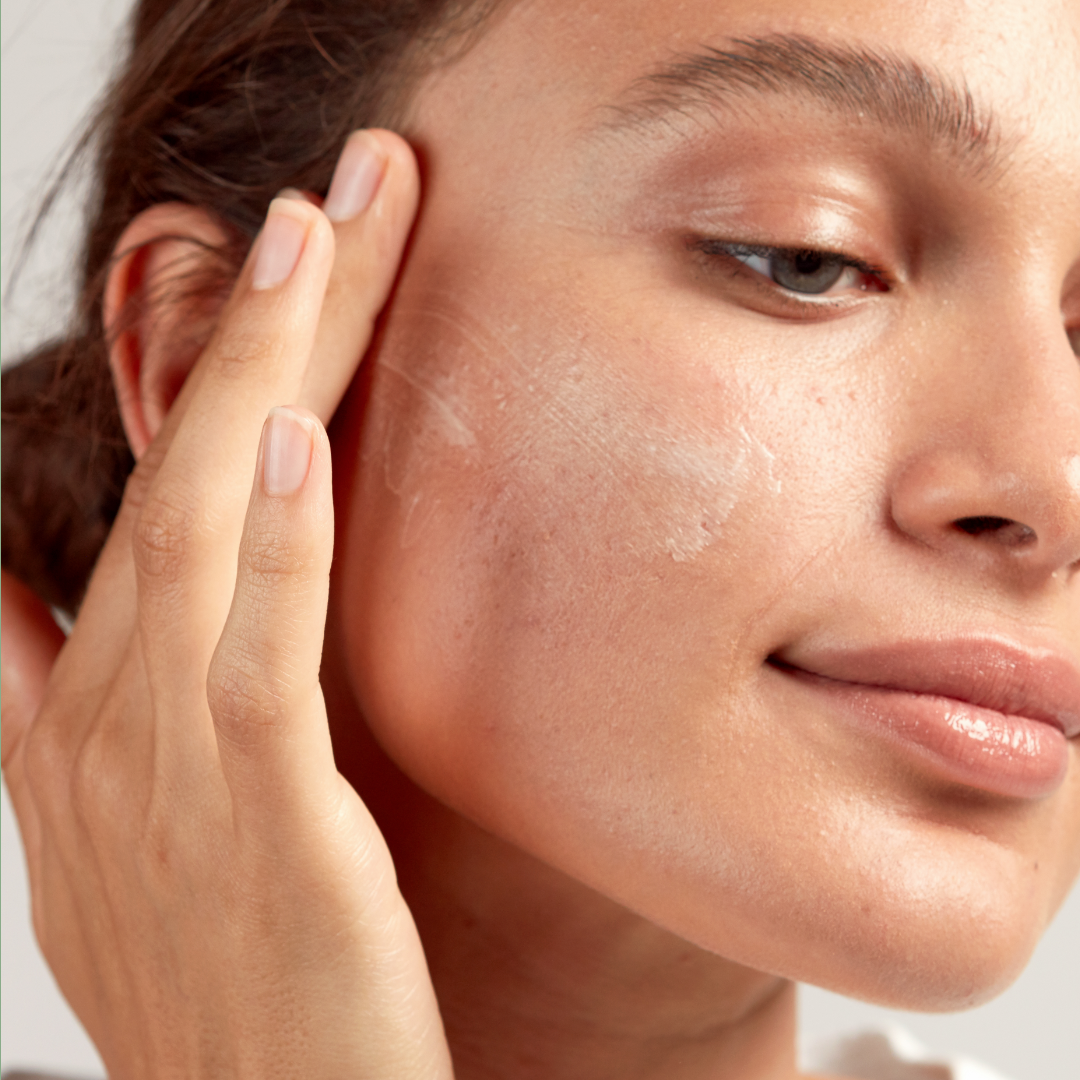
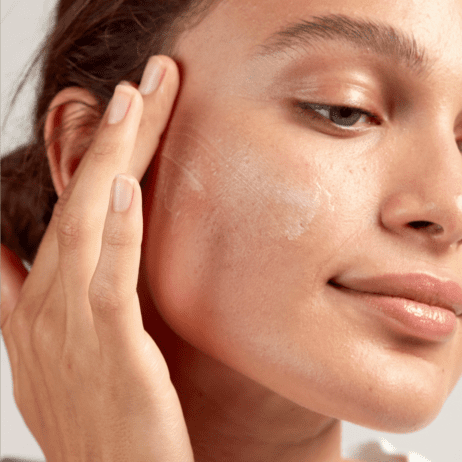
We have our own skincare philosophy and routine for sensitive, rosacea-prone, and acne-prone skin so that you can develop your own skin tuition. Developing your skin tuition means developing an intuition of what your specific skin needs at any moment. Today, we’ll discuss what your oily, acne-prone, and rosacea-prone skincare routine should have to be in a good place with sensitivity and inflammation.
As the seasons change, our environments change, and as we age, our skin is going to need different things. By being a bit systematic with how we approach skincare and paying attention to what our skin is doing with different products, we can develop strong skin tuition to guide us through different phases of life. Before we get into the topical parts of skincare, we must mention that skincare really starts from within.
Before diving into products, let’s talk about skincare philosophy. This is important because while we can recommend certain products, they may or may not work for you. Having the right skincare philosophy will help you develop your own skin tuition more effectively.
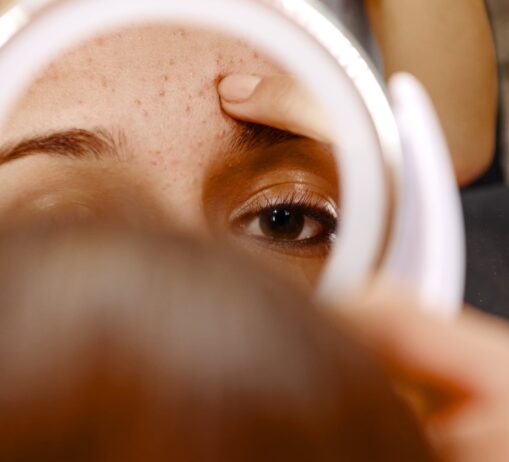
One key approach is to be systematic. In science, when testing something, we change only one variable at a time. For skincare, this means changing only one product at a time. If we change multiple products like toner, sunscreen, and a sheet mask all at once, it becomes unclear which product is responsible for the results. This slows down the learning process.
Though it may seem tedious, changing one product at a time can speed up skincare learning in the long run. After several days, you’ll understand what the new product does for your skin. Similarly, we like to do A/B testing on our skin. Our symmetrical faces allow us to have a baseline control sample and a variable sample.
Introduce one product at a time and also do AB testing on your face, meaning only put that new product on half of your face so that you have something to compare it to. If there’s a product in this video that sounds interesting to you, try introducing it on half of your face, and try to keep everything else the same in your routine to see what it does for you.
Taking a systematic approach like this will make the whole process less confusing and much more efficient.
The actual products we recommend! We’re first going to run through a nighttime skincare routine, then we’ll share what we do during the day. We’re picky about what we put on our faces, working with sensitive skin, we want our products to be fragrance-free, alcohol-free, and also citrus oil-free. We’ve noticed that products with citrus oils really irritate our skin, so there are a few things we look out for. All the products we will mention today are going to be sensitive-skin safe.
The first step is cleansing, followed by watering, building, treating, and moisturizing.
Step one: cleansing. Here, we’re using the AHA Exfola Glycolic Cleanser with lukewarm water.
We’ll follow up the cleansing balm with a generic gentle cleanser. We’re not too picky about cleansers; we think there are many companies that have fragrance-free, gentle cleansers. The most important things for us here are that it’s affordable and that it’s not going to strip our skin.
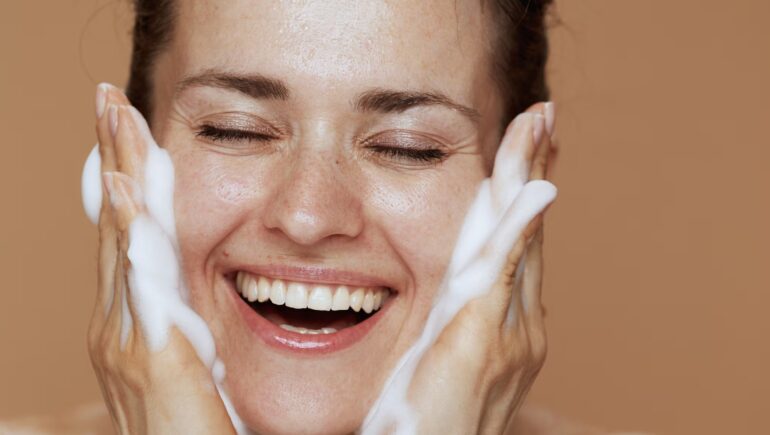
The next step of our routine is our favorite step, this is the watering step. It’s basically just soaking your skin with a hydrating essence or toner to add moisture to your skin. This step will give you that glass-skin glow from within. We usually do two to three layers of essence or until our skin feels saturated and plump.
Someone once described this as being similar to watering a plant, you just keep adding moisture until the soil is saturated.
The next step is all about building a healthy skin barrier. This is when we use calming serums with ceramides, peptides, and probiotic ingredients that help support our skin and the healthy microbes that live on it. Again, we don’t want to strip our skin of bacteria, we need those bacteria to protect us.
Here are two great options: the Retinol Intense Reactivating Serum, we’re really loving this serum. It’s affordable yet luxurious and milky, and our skin really likes it too. Another option is pricier, but this Kate Somerville serum always helps keep our skin microbiome balanced.
The treatment step is where we include any active ingredients that help treat skin concerns, like vitamin A products for texture or acids for acne. If you have sensitive skin, it’s super important to be very conservative with this step.
Here are a few products we use in our rotation: this Retinol Eye Cream is very gentle because it contains a retinol derivative, so it’s likely not going to irritate you, and it has a beautiful texture. There’s a lot of research to support that azelaic acid can be an effective treatment for rosacea.
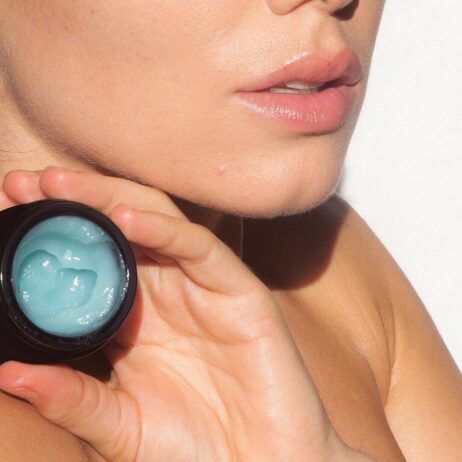
If we’re honest, we don’t think it does much for our skin, we don’t think our skin really likes azelaic acid. But rosacea is such a personal thing. This is a great product and worth trying if you have rosacea because your rosacea might be responsive to it.
As a bonus, we have a very edgy step that we don’t think dermatologists would approve of, but through our AB testing on our faces and lots of experimentation, your skin just may like it.
Essentially, what we do is a very last step. Not always, but often, is to put an entire zinc oxide mask on our faces. What we’re using here is a fragrance-free diaper cream. You want to be careful because a lot of diaper creams have ingredients like fragrances and other things that you don’t want to leave on your skin all night. But this one has pretty great ingredients.
What we’ve found is that putting a zinc oxide mask on our skin really balances our oil production, gives us a brightened glow, and heals any sort of wounds very quickly. If you’re feeling a little adventurous, we would recommend maybe first using zinc oxide cream as a spot treatment for any acne that comes up.
Daily 9:00AM – 9:00PM
Copyright © 2024 DASHE. All Rights Reserved.